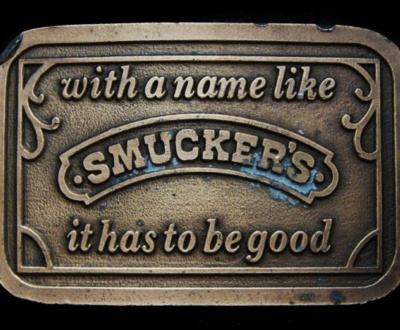To Tell a Compelling Brand Story, Become Part of Your Customer’s Identity
- December 24, 2013
- Branding
Every successful company started small, as just an idea in the founder’s head, and then came alive from there. These are a company’s roots, and they are something every person in the world can identify with, no matter how different their own roots may be. Even though we all come from diverse backgrounds, just like our beginnings are the foundation for where we get our identity, the same is true for a company when building a brand.
Whether a company started with humble roots and grand aspirations or attracted the attention of wealthy sponsor from the beginning, all of them have a story to tell. This story is what shapes a brand’s identity, and like all things related to marketing, it is malleable.
Did you realize that perhaps the best-known luxury car brand in the world, Lamborghini, was the result of a tractor mechanic working from a garage who precisely focused his attention on detail and quality-of-design? Or that a company backed by wealthy investors become the low-income haven for travelers across America, called Motel 6? Each of these brands built trust with different markets, markets that were in fact the opposite of where their founders’ own personalities fit, by telling a story that resonated with their customers.
This is because the brands they built were targeted to a specific market segment. What those companies were selling was something their audience was ready and eager to embrace. Because of this, a company seeking to build a brand identity needs first to consider whom they want to buy their products. Simply identifying with a particular market segment isn’t good enough. The brand needs to get to a point where the story the customers tell themselves about the product matches how they view the world. Customers need to be able to look at a product and say to themselves, “I will buy this product because I am X kind of person, and people like me buy this brand.” When this happens your brand becomes part of your how target market defines themselves, which is a tremendously powerful force on which to build brand loyalty
Ask yourself who writes with a Mont Blanc pen, and a certain figure comes to mind. If you identify with that figure, then you’re the in the target market for that product. Do you prefer Adidas or Puma sports shoes? Despite a bitter rivalry spanning more than six decades, both brands of shoe continue to sell, and each one identifies with a different market segment because of the story surrounding their products. In every case, the kind of person you want to sell to will dictate the story you tell about your company. Mont Blanc would no more hire a basketball player to represent them than Adidas would an investment banker. They are two different audience segments, and the companies come from two different points of origin.
By understanding the audience you want to sell to, you can better grasp the nuances of that particular market. If you are selling luxury cars then you aren’t going to be concerned with your brand’s impression among low-income market segments. On the other hand, if you are selling affordable cars with low costs of ownership, the opinion of the low-income market is the only thing you care about — but knowing where you fall requires an understanding of the roots each of those consumer groups identifies with.
While that seems simple on the surface, it is anything but. The average Ivy League analyst might know more about tea and ties than a high school dropout who learned to code websites by himself, but they both have equally relevant perspectives in terms of building a brand depending on your product. By crafting your story to appeal to one, you are implicitly building your brand so it does not appeal to the other. And that’s okay! Your product is not for everyone — no product in the world is — but if you try to tell a story that appeals to the entire world it won’t build a strong connection with any segment of the market and you will wind up going nowhere.
Instead, determine who your target customer is and then craft a story that makes them believe people like them are the kinds of people who buy from your brand. As for people not like them, that’s another company’s opportunity. But for your target customers, when they tell themselves a story about who they are and what they buy, make sure your brand is a part of that narrative. (Check out our guide that outlines some of the most effective social networks for your brand to share its message as well as our brand positioning strategy to learn how to position your brand in the marketplace for success).
This is author biographical info, that can be used to tell more about you, your iterests, background and experience. You can change it on Admin > Users > Your Profile > Biographical Info page."
About us and this blog
We are a digital marketing company with a focus on helping our customers achieve great results across several key areas.
Request a free quote
We offer professional SEO services that help websites increase their organic search score drastically in order to compete for the highest rankings even when it comes to highly competitive keywords.
Subscribe to our newsletter!
More from our blog
See all postsRecent Posts
- 4 Reasons You Should Be A/B Testing Your Email Marketing Campaigns May 15, 2018
- The Secret Strategy for Using Surveys to Boost Conversions (It’s Not What You Think) February 2, 2017
- Advanced Brand Positioning Strategies December 31, 2016




